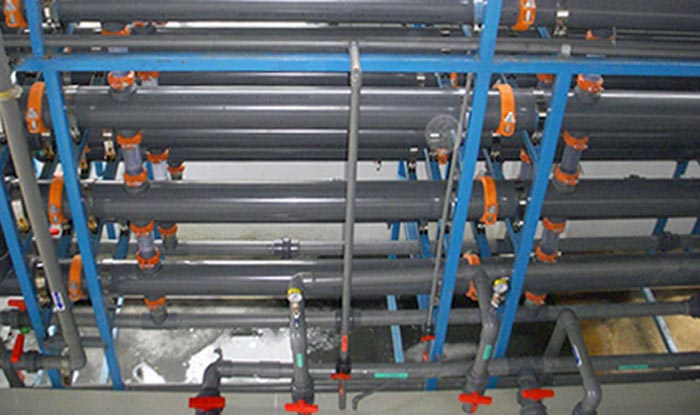Membrane Fouling Mitigation

The most important factor in water recycling and reuse with Reverse Osmosis (RO) is the pretreatment that protects the RO membrane against fouling, scaling or degradation. The recent trend to the widespread application of low-pressure tubular membrane microfiltration (MF) prior to Reverse Osmosis is not without challenges. Industrial wastewater is known to consist of complex membrane fouling constituents. Most of them are obvious and defined, but many are hidden and unknown to the design engineers. In many cases, it only takes one incompatible fouling element to paralyze the entire system operation. Like RO, MF is subject to fouling by various organic, mineral, and chemicals that are unique to the specific membrane property.
Various fouling reduction or flux enhancement techniques are incorporated into the design of MF products. Most commercial MF products employ one or more of these techniques: (1) Backwash, (2) Turbulence Promotion, (3) Polarization Minimization, (4) Surface Modification, (5) Pore Size Modification, and (6) Chemical Pre-treatment. It is important to understand these features in the selection of the proper tubular MF products. While most of the above techniques can address one or two specific types of fouling contaminants, the chemical pre-treatment approach can provide a wide range of flexibility to complement the others. For example, particle size of foulants can be manipulated through addition of proper chemicals to satisfy the pore size and surface charge of the selected membrane.
Pre-treatment chemistry was demonstrated as a critical part of the membrane based water recycle process in maintaining the operation efficiency by removing the unwanted or incompatible contaminants or converting them into MF membrane-compatible species. Advancement made in membrane fouling mitigation technique results in substantial reduction in both CAPEX and OPEX. This paper provide a review of field performance data for pretreatment chemistries applied in ZLD water recycle systems to achieve membrane fouling reduction and flux rate enhancement for the MF pretreatment process. A case study is presented for the pretreatment chemistry developed for cooling water blowdown recycle in a power plant. Membrane fouling management is based on scientific data and methodology. However, the know-how developed from empirical field experience is essential to the overall result of a successful membrane based water recycle system.

